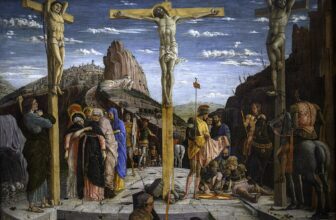
Are There Any Paintings of Eleanor of Aquitaine?
In grand tapestry of medieval Europe, few figures shine as brightly or as boldly as Eleanor of Aquitaine. She was more than a queen , she was a legend, a political force, a cultural patron, and a woman whose life was laced with ambition, scandal, love, and loss. Spanning nearly a century of turbulent history, Eleanor’s influence touched France, England, and the Crusader states, and her legacy echoes still today in the annals of royalty, art, and literature.
One of the first questions many modern enthusiasts ask is whether there are paintings or portraits of Eleanor of Aquitaine. Given her stature and the rich stories that surround her, it’s natural to hope for a glimpse of her face , a visual connection to this powerful woman who ruled in an age when few women held true power.
Unfortunately, no authentic contemporary portrait of Eleanor of Aquitaine survives. She lived in the 12th century, long before the Renaissance ushered in the age of lifelike portraiture. Artistic conventions of the time were heavily stylized, symbolic, and rarely aimed at capturing individual likenesses. That said, Eleanor appears in several medieval manuscripts and effigies, most notably in a 13th-century sculpture on her tomb.
However, over the centuries, artists have attempted to reimagine Eleanor’s image based on descriptions, fashion of her era, and the legends that have grown around her. These paintings and illustrations , found in historical novels, museum exhibits, and scholarly reconstructions , are more romantic interpretation than historical reality. One such imaginative portrait can be seen in the Musée de Cluny in Paris, where medieval art seeks to resurrect the world Eleanor once walked.
Frederick Sandys painted a notable depiction of Queen Eleanor of Aquitaine. His 1858 painting, “Queen Eleanor,” depicts her as she is said to have been on her way to poison King Henry II’s mistress, Rosamund Clifford. The painting is currently on display at the National Museum Cardiff
Her effigy at Fontevraud Abbey in France, where she is buried, remains the most authentic visual representation we have. It shows Eleanor reading a book, a striking symbol of her intellectual prowess, in a time when few women were literate, let alone scholarly. The tomb effigy is not a painting, but it is art , and perhaps more telling than any brushstroke could be.
Why Is Eleanor of Aquitaine So Famous?
Eleanor’s fame comes from the extraordinary breadth of her life and the power she wielded during it. She was Duchess of Aquitaine in her own right, Queen of France through her first marriage to Louis VII, and later Queen of England by marrying Henry II. Few women , then or now , can claim to have been queen of two nations.
But Eleanor wasn’t just a consort. She was a leader, a cultural icon, and a political strategist.
Born in 1122 into the ruling family of Aquitaine, she inherited one of the wealthiest and most culturally vibrant regions in Europe. When her father died, she became the most eligible heiress in Christendom. Louis VII of France married her soon after, and she was crowned Queen of France at just 15.
Eleanor’s marriage to Louis was marked by tension. She was intelligent, independent, and assertive , qualities not welcomed by the pious and reserved Louis. Their union fractured during the Second Crusade, where Eleanor led her own retinue to the Holy Land, scandalizing Europe by taking an active role. Rumors abounded, including whispers of a romantic entanglement with her uncle, Raymond of Antioch. Eventually, the Pope granted an annulment, citing consanguinity (a common excuse when political alliances soured).
In 1152, just two months after her annulment, Eleanor married the young and fiery Henry Plantagenet, Duke of Normandy. Two years later, he became King Henry II of England, making Eleanor a queen once more , this time of an empire stretching from Scotland to the Pyrenees.
It is this marriage, and the drama within it, that has cemented Eleanor’s legend.
What Happened to Eleanor of Aquitaine and Her Husband?
Eleanor and Henry’s marriage was one of passion and power , and ultimately, betrayal. Together, they had eight children, including two future kings: Richard the Lionheart and John Lackland. Yet their union deteriorated over time, especially as Henry’s infidelities became more public, and his ambitions clashed with Eleanor’s own.
In 1173, Eleanor did the unthinkable: she supported her sons in a revolt against their father. The rebellion failed, and Henry had Eleanor imprisoned for her role in the insurrection. She spent the next 16 years under varying degrees of house arrest.
After Henry’s death in 1189, their son Richard ascended the throne. One of his first acts as king was to release Eleanor. At 67, she resumed her role as queen mother with vigor. She served as regent while Richard was away on crusade and even negotiated his ransom when he was captured. Her political acumen was unmatched.
Eleanor continued to advise and support her youngest son, King John, after Richard’s death. She finally retired to Fontevraud Abbey, where she died in 1204 at approximately 82 , an astonishing age for the time.
Her tumultuous relationship with Henry has inspired countless works, most notably the play and film The Lion in Winter, which portrays their sharp wit and deep, if embattled, love.
Is Eleanor of Aquitaine Related to Queen Elizabeth?
Indeed, Eleanor of Aquitaine is an ancestor of Queen Elizabeth II , and of virtually all European royalty. Through her children, especially John of England, her bloodline extends through centuries of monarchs.
Queen Elizabeth II descended from Eleanor through both John and his descendants, including Edward I, Edward III, and the line of the Plantagenets, Lancastrians, and Tudors. The British royal family’s current lineage connects through the House of Windsor, but its roots stretch deep into medieval dynasties.
Eleanor’s genetic legacy threads through France, Spain, Portugal, Germany, and more. She is, quite literally, the grandmother of Europe. Her descendants include Richard the Lionheart, Edward III, Mary, Queen of Scots, and even Marie Antoinette.
Where Is Eleanor of Aquitaine Buried?
Eleanor is buried at Fontevraud Abbey in the Loire Valley of France, one of the most serene and spiritually significant monastic sites of the Middle Ages. Her tomb lies alongside her husband, Henry II, and her son, Richard the Lionheart , a family reunited in death, if not always in life.
The abbey was a royal mausoleum for the Plantagenets, and Eleanor’s burial there speaks volumes of her enduring status. Her effigy , unusually depicted reading a book , offers a glimpse into how she wished to be remembered: wise, composed, and cultured.
Fontevraud remains a popular historical site, where visitors can walk the cloisters, admire the Romanesque architecture, and stand in the presence of the queen who shaped an empire.
Where Is Eleanor of Aquitaine’s Painting Located?
As mentioned earlier, no true painting of Eleanor exists from her lifetime. However, several artistic depictions , inspired by later interpretations , exist in modern collections, including the following:
Musée de Cluny (Paris): Houses medieval art and some artistic representations of noblewomen styled after Eleanor.
British Library: Manuscripts with stylized depictions of queens from the Plantagenet era, occasionally assumed to represent Eleanor.
National Portrait Gallery (London): While not featuring a confirmed portrait, it includes various historical artworks of the Plantagenet period, often used in literature and exhibitions to evoke Eleanor’s image.
Many of the “portraits” of Eleanor found in books, films, and television are modern creations based on historical imagination. These include her depiction in stained glass, illuminated manuscripts, and neo-Gothic paintings from the 18th and 19th centuries when romanticism brought renewed interest in medieval figures.
The Queen Who Changed Everything
Eleanor of Aquitaine’s story is one of unbreakable will, cunning diplomacy, and boundless influence. She defied the roles set for women in her time , not quietly, but boldly, unapologetically, and with flair. She ruled lands, advised kings, raised warriors, and challenged popes. She lived through two crusades, several rebellions, and the rise and fall of empires.
She was a queen twice, a mother of kings, a political prisoner, a regent, and a patron of the arts. She was accused of scandal, revered for her intellect, and remembered for her unwavering strength.
Though no painting can fully capture her, and no single image survives from her time, her legacy lives on more vividly than any portrait ever could. It lives in the pages of history, in the stones of Fontevraud Abbey, and in the bloodlines of queens and kings who still carry her spirit into the modern age.
Eleanor of Aquitaine is not just a figure from the past , she is a force that shaped the world we live in today.




